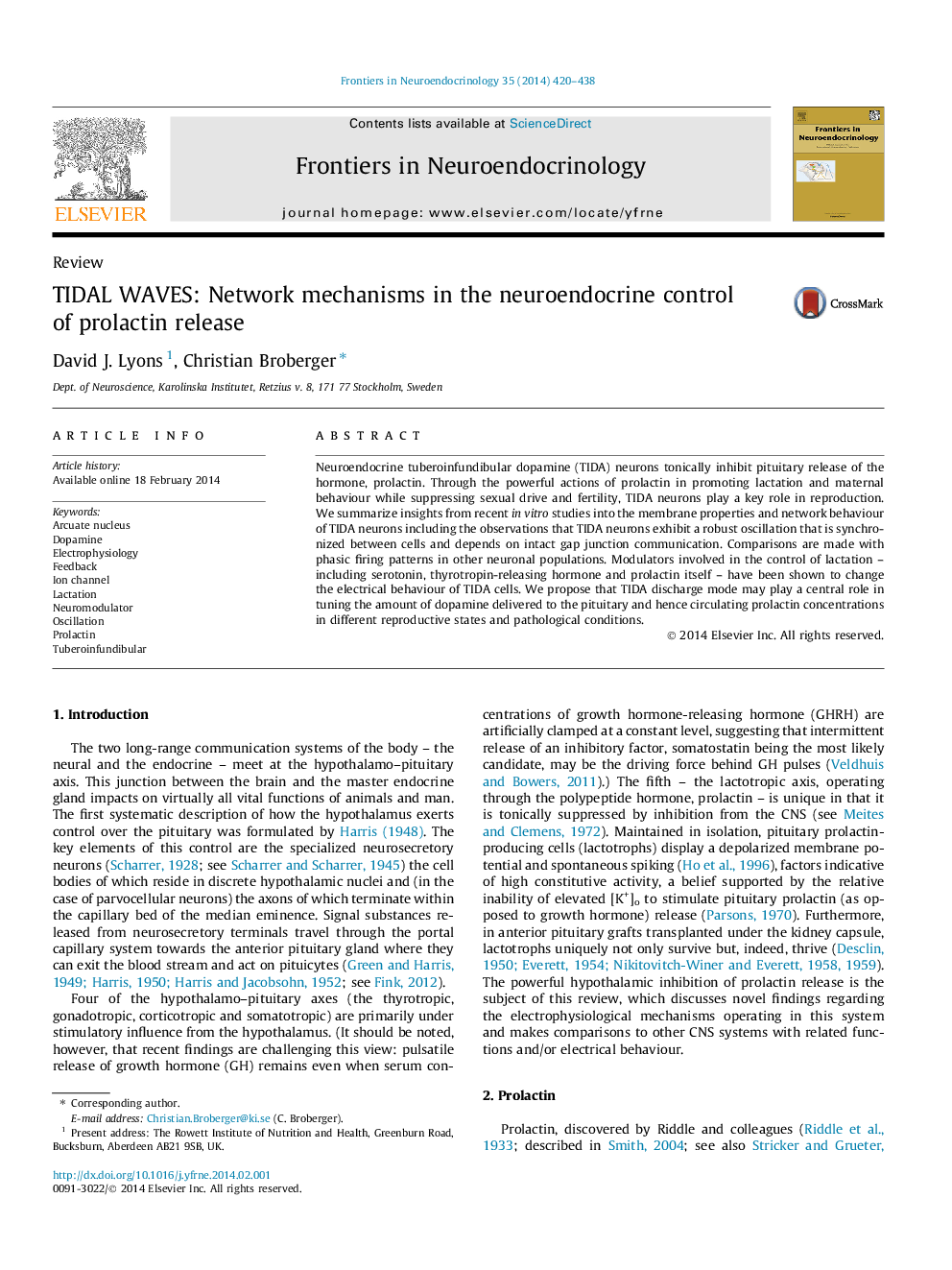| Article ID | Journal | Published Year | Pages | File Type |
|---|---|---|---|---|
| 2799309 | Frontiers in Neuroendocrinology | 2014 | 19 Pages |
•Tuberoinfundibular dopamine (TIDA) neurons provide tonic inhibition of pituitary prolactin secretion.•Recent data shed light on the electrophysiology of TIDA neurons.•Membrane properties include a robust oscillation.•Prolactin-modulating factors can switch discharge state from phasic to tonic or quiescence.•Firing patterns are hypothesized to determine dopamine output and, in turn, serum prolactin levels.
Neuroendocrine tuberoinfundibular dopamine (TIDA) neurons tonically inhibit pituitary release of the hormone, prolactin. Through the powerful actions of prolactin in promoting lactation and maternal behaviour while suppressing sexual drive and fertility, TIDA neurons play a key role in reproduction. We summarize insights from recent in vitro studies into the membrane properties and network behaviour of TIDA neurons including the observations that TIDA neurons exhibit a robust oscillation that is synchronized between cells and depends on intact gap junction communication. Comparisons are made with phasic firing patterns in other neuronal populations. Modulators involved in the control of lactation – including serotonin, thyrotropin-releasing hormone and prolactin itself – have been shown to change the electrical behaviour of TIDA cells. We propose that TIDA discharge mode may play a central role in tuning the amount of dopamine delivered to the pituitary and hence circulating prolactin concentrations in different reproductive states and pathological conditions.
